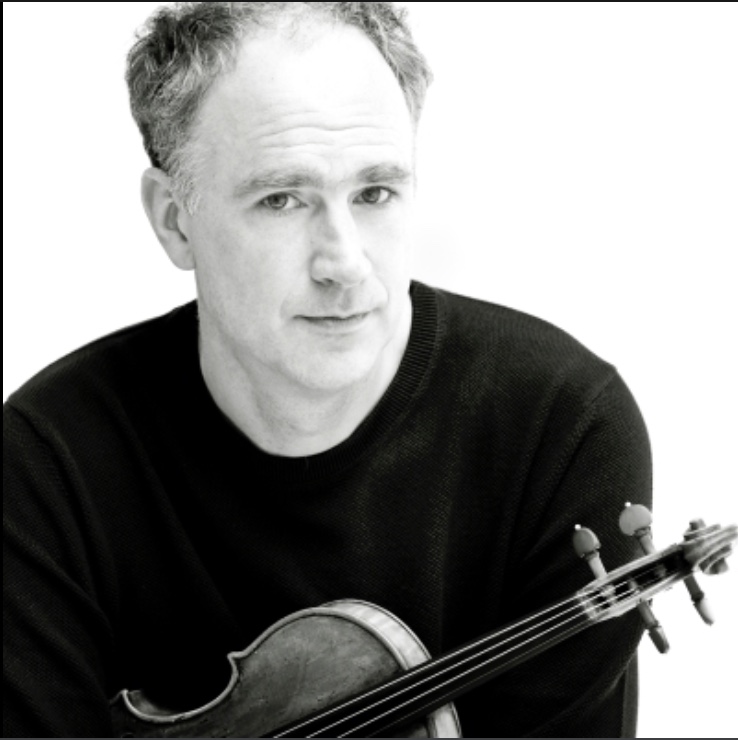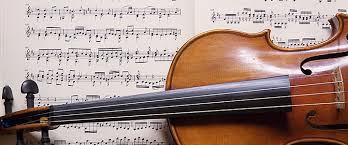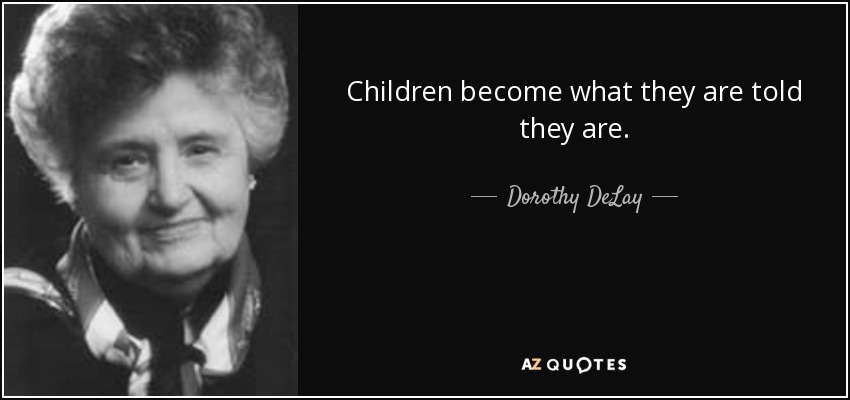
Interview with the violinist and conductor Florian Donderer
On November 10th 2021 the German violinist and conductor Florian Donderer, conducted and played with the Irish Chamber Orchestra in Limerick, Ireland where I currently live. I met him after one of his rehearsals and we talked about several matters regarding violin playing, teaching, and practising. It was an interview that I enjoyed very much. I can say that it really made an impact on me both as a violinist and as a musician. I hope that you enjoy reading the interview as much as I did taking it. As always, I would be glad to receive your thoughts and comments.
Can you describe me your ideal practicing session?
For me, first of all, it is great to find time to practise in the first place. I remember when I was studying in London, I was challenging myself to practise for long hours. It was not as effective as I expected it to be. Nowadays, I try and need to really make every minute of my practice count. I must say that I would like to spend more time on practising technique, but the problem is that once I focus on technique, I easily get stuck with it and then there is no time left to prepare the repertoire for my concerts. So I need to be careful with balancing that. Throughout my career I have developed time management skills around practicing. An essential part of practising of course is the mental preparation - knowing how I would like to play a piece! By now I have understood that I will be creative and therefore make real progress only in a limited timeframe: If I have a piece to learn I will go for it. But when I notice that I don’t further make progress, I will stop working on that particular passage and move on to a differnt place or piece, take a break or I might stop practising altogether. My brain will do the processing preferably over night and when I come back fresh the next time I hopefully can pick up on a better level and have more ideas to experiment with.
Do you have a specific warm up routine?
Well, it depends. Sometimes I warm up using repertoire. There are some pieces that I turn to regularly, like a certain study of Wieniawski Ecole Moderne for my right hand, or Paganini’s Moto Perpetuo for the left hand. Other times I warm up by practising scales or by practising vibrato only. I am not the type of violinist that uses a lot of vibrato in my playing, but I find that if I practise vibrato in various speeds and amplitudes, this is good for the articulation and the freedom of movement in the left hand. Something else I do from time to time is to practise without shoulder rest and chin rest. I take them off and place the violin on the collar bone, so my shoulder is free to move. I start playing looking straight and with my head not touching the violin. When you do this the first time the violin will move in every direction and when you shift up, you can’t shift down without nearly dropping the violin. Gradually however, you find a balance and gain full control. This practising approach helps me to free my head from constantly holding the instrument, so during a performance where I play with a shoulder rest, I can lift my head anytime I feel like it, without worrying about what happens in the left hand. This creates a freer way of playing.
What do you think when you play? What happens in your head?
Well, it depends on the piece. The more I am familiar with it the more I can focus on what I want to express and convey to the audience. Of course, there are all these technical parameters I must think about, but it is all in the background. It is not a conscious process. As a principle, what I try to do in every performance is to tell a musical story. That’s what I am there for. To tell a story and to move the audience.
Do you connect a specific story to your interpretation?
Not really. I don’t have a story line. I know that some musicians create a story that carries through the whole piece but, personally, I prefer to use images which I relate to music. These can be random images or, in many cases, they are images I take from different operas. I think that the opera is an art form that we should get inspiration from as performers because it can make us think not only about the acoustic output but also about the story we want to narrate. How are we seen on stage, what do we represent when we play? For example, when I play a piece by Mozart in D minor, I have Don Giovanni in my head or in a certain section I might think of Zerlina. Apart from that, [i.e., creating images of the music] understanding the harmonies is also very important. Especially in the music of the classical period. It is important to be aware of the moments of tension and release in a piece. Also, in string playing the key a piece is written in is very important because different keys create different resonance in the instrument. So, for example, if you have a Forte dynamic in a piece written in D flat major, it is not the same Forte as one in D major. In D major it is more open, it feels differently. As a player you must be aware of these subtleties and then the music will lead you. Furthermore, I am a lot about gesture and movement in music. If I was a dancer, I would dance the music that I play. Every musical piece has a character, and I am focusing on getting this character across when I play. Also, I have a certain feeling of joy when I am on stage, the joy of having the privilege to perform for others. I think to myself that someone has asked me to go on stage and to play for other people. I have no limits or inhibitions on stage. I worry before the concert but during the concerts I open my heart up.
In a time when everyone demands perfection is there any space for spontaneity?
Yes, I think there is. I always make spontaneity part of my playing. Although I prepare a musical piece, in the end, I am not entirely sure how I will play it. Especially pieces that I know very well, like the Bach Chaconne. I don’t know how I will play it in the concert. I will go on stage, and I will play it according to the situation. It is like some children’s books that you are in page two, for example, and you are given two choices. If you select choice a of the story, then you should move to page four. If you select choice b, then you should continue on page three. For me, that’s how music happens: You play something, but it will never be exactly as planned. Of course, I need to have a concept of how I want to play a piece, but it should also be spontaneous. You need to go with the situation, and you need to go with inspiration. I think that to be open to that inspiration is the most important thing. This is easier when you perform totally on your own, but it can also work when you play as a soloist with an orchestra, or in a group, provided that you know where to be free. To be spontaneous is the most wonderful thing. You must be in the moment.
How can this work with students who must take school exams or even worse, play in auditions? How can we teach them spontaneity, when they can’t really use it until much later in their professional life?
In auditions, the violinists with the most artistic spark will convince you. Provided, however, that they have a solid playing: good intonation, rhythm and sound. All these elements must be there. Now, regarding spontaneity and freedom in playing, as a teacher you need to understand if the spontaneity is there to cover up a defect of the student’s playing or if it is spontaneity being in command. I remember a masterclass with Ruggiero Ricci where a student played a Paganini caprice. He played impressively and everybody was blown away by his playing. But there was something fishy about it and Ricci asked him to play it slowly. When he did, we could hear that nothing was really in control. I really find slow practising to be very beneficial. Even when I work with an orchestra, I do a lot of slow rehearsing.
Coming back to exams and auditions, my point of view is that our wellbeing should be our priority: we need to be our selves. If you are being yourself and people don’t like it then you are true to yourself. If you try to get an audition by trying to be a different player to what you really are, do you really want to be there? Do you want to have a job that you only got because you changed your artistic identity? So, the question that arises is: Should we educate musicians to get a job, or should we educate them to become artists? We, instrumentalists are a privileged species in the art world because we can have a steadily paid job in an orchestra. We learn to play an instrument knowing that this could be a possibility for us. Conversely, a sculptor or a painter can’t get a steady job in this sense. So, they focus on their artistry. I believe that if someone wants to be a musician, it shouldn’t be about getting a job. First, you need to know who you are and why you play music. Then you might want to think about whether you want to get a job in an orchestra. Many people study music nowadays and many of them are highly qualified but without a steady job. I believe that people should only study music if they burn for it so much that is “is it”. They need to be thinking ‘I want to be a musician’ instead of ‘I want to get a job’. There are so many ways to spend your life as a musician or as a person who has studied music. You don’t necessarily need to be a professional musician. There are so many wonderful musicians that do something else for a living.
Should students go through a period when they calculate every movement in their playing so they can cultivate a structured way of playing which gradually will become instinctive?
Yes, but I would put it differently. You need to know what you are doing a 100 percent. And yes, eventually it needs to become instinctive. But I start the process of analysing at the opposite end, so to say… Too predominant is the approach that the musical obligations determine the physicality of playing. As a result very often people deny themselves the pleasure of feeling good and being themselves, as the musical result is regarded more important than self care. I give an example of my theoretical approach concerning the bow arm: If I notice that a student is struggling with a physical aspect, I will ask to imagine that one has to convey this musical moment in a movement of - let’s say - dance. Imagining one would have to dance this musical moment to somebody who cannot hear. Most people will do a natural and individually appropriate movement. Then I ask the student to go for this gesture on the violin and to be ok for it to not work and not have the intended result. To the contrary, to be curious what the musical outcome of this instinctive gesture might be! And then modify the still hopefully natural and instinctive gesture until the result is the intended one. Always experimenting with natural instinctive and direct gestures that don’t get too complicated, so that we stay simple human beings while we play. And so that we are the same human beings as players as we are as performers.
Which has been your biggest challenge as a teacher?
To get rid of bad habits is always a challenge. It needs time and patience. A common problem for example is the set-up of the left hand. The usual approach is that first we are taught to place the first finger. Then the second and third. When the time for the fourth comes, the hand is not properly placed, and we have to stretch a lot. I believe that the placement of the left hand must start with the fourth finger. It is easier for the first and second fingers to stretch back than the fourth finger to stretch forth.
If we compare a recording of Bach by Milstein and a recording of the same piece by a contemporary player, then we can conclude that they are both beautiful interpretations but totally different. What makes a good interpretation regardless of style of playing?
Interpretation is a zeitgeist. In a way, it is fashion. For example, historically informed performance doesn’t mean that we play as musicians did those days. We might get close to how it probably sounded like, but we have our own aesthetics that have been shaped by our experiences. Through our lives, we have heard Led Zeppelin and Cream and Mahler symphonies and other styles of music that have shaped those aesthetics. Professor Clive Brown, who is also a violinist, has done extensive research on historically informed performance. It is very interesting to look at his work. He explains and he also demonstrates how people played in the classical era. We also have recordings by great violinists of the past, who have a different style to the one we play today. But If we try to copy them now, it can sound artificial. We live in the now and there are certain aesthetics that dominate. A good interpretation comes if you understand the music through your musical upbringing, and your musical experiences. You know, someone might play Bach with a lot of vibrato, and give a great performance. Still, my reaction might be: Oh, I don’t really like it. But would this mean that it is not good because I don’t like it?
To be honest I don’t like the word interpretation. I don’t interpret anything. I convey the music to the audience in my way, filtered through my background, my experiences, my education, and the influences from all the people in the world I have been fortunate to be in contact with. All these elements form my musical language. I think that someone should look for and develop their own musical language and they can use this language to play the music. The more musical languages you speak, be it Baroque, be it romantic, be it Shostakovich for example, the more fluent you become as a player. So, it is not a matter of interpretation but a matter of language. I can say that now I feel much more assured of my musical language. I can go on stage and feel true to myself. I can say that this is how I make music and I offer it to you.
How has your life changed since you left the Deutche Kammerphilharmonie Bremen?
I was in the concertmaster position of the Deutsche Kammerphilharmonie Bremen for twenty-two years. To balance my musical activities of orchestra playing, chamber music, play&direct and my family, became very difficult and stressful, especially after joining the Signum Quartet and suddenly being double busy. So I decided to distress my life. Now I have the privilege to only play chamber music, direct orchestras as a guest or play as a soloist. I am trying to keep working with orchestras because this is something I believe I do very well. I am good with people, and I love working with orchestras. I go to different orchestras and engage in projects. One of my musical dreams is to be able to work with an orchestra on a regular basis as a director so that I can build something.
Another thing I am trying to do now with my colleagues in the quartet, is to find a base for us in Bremen. We want to create a creative space for us that is not commercial, where we could rehearse, perform and do workshops. Something that I have learned is that music making has two sides: a commercial side and a noncommercial side. Musicians who work as freelancers and orchestras, of course, have to be commercially successful. But following this path you lose sometimes the space to be unsuccessful. It is very important as a musician to be able to just try out things, to experiment. So, this is what we are looking for now. We have created with my quartet a space which we temporarily call ‘Signum Creative Forum’ and we are hopping from venue to venue, usually old warehouses, where we rehearse for a few months and then we move on. Hopefully, one day we will find a permanent place which will act as a meeting point for the arts. When a place has art then it has life. I think that cities should be smart and understand that art is good for the society so that more places are used as art spots.



